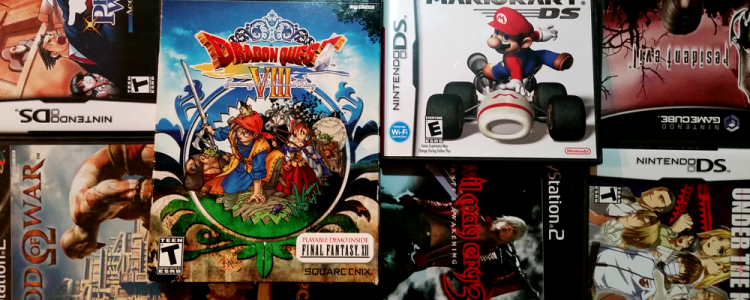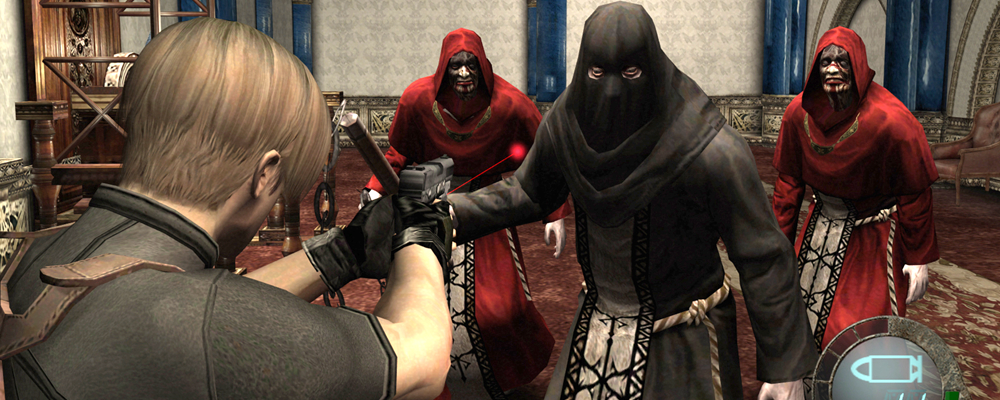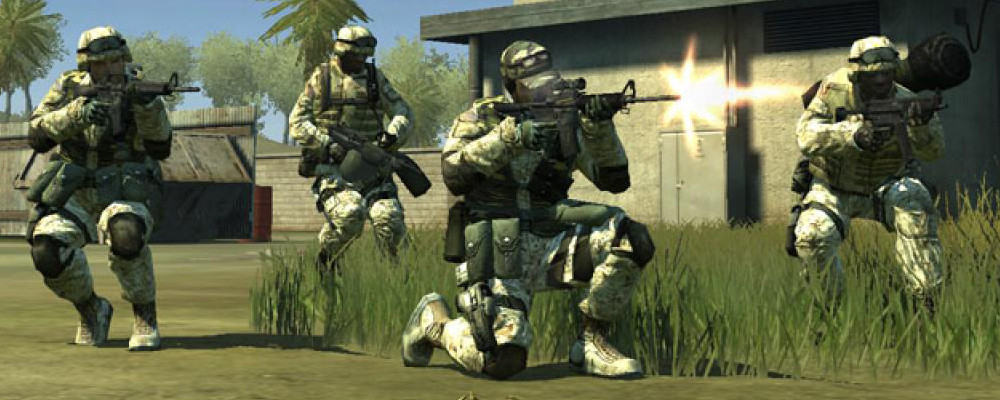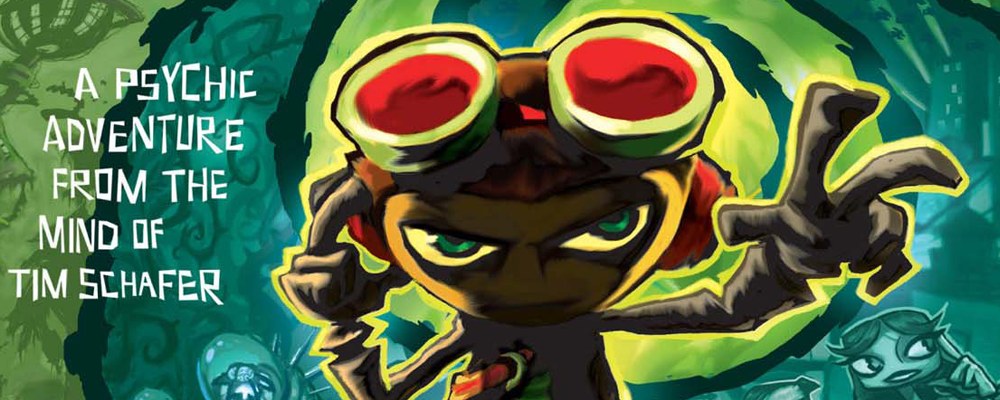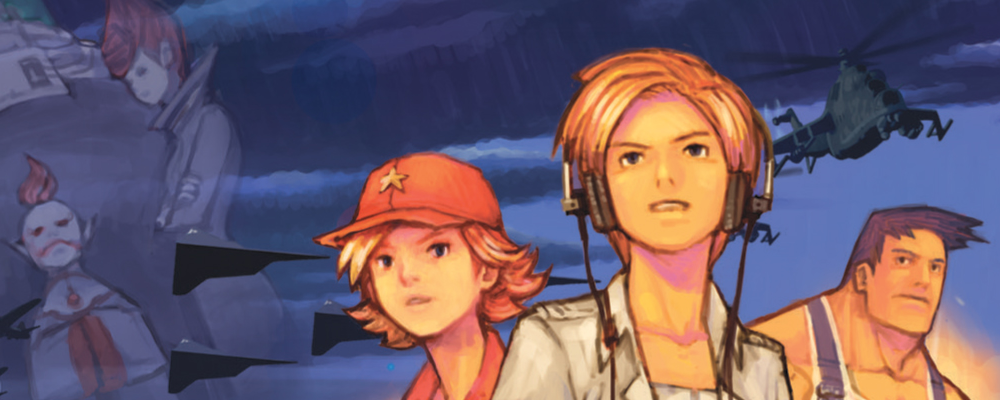Ten years ago, the game industry was going through the launch of the seventh generation of console hardware with the debut of Microsoft’s Xbox 360. Nintendo received its first serious competitor on the handheld front with the release of Sony’s PlayStation Portable. Politicians teamed up with the mainstream media to, once again, warn the masses about the corrupting influence games presented — all over a little “Hot Coffee” leak in Grand Theft Auto: San Andreas.
I won’t try to sell you that 2005 was a “grand year of change for the game industry.” If you’ve been here long enough, you’ll realize that’s every year when discussing an industry whose only constant is change. Yet it’s still good to take a moment and reflect on where we’ve been while we’re busy trying to predict where we’re going.
Sure, the politics and wankery of the business are interesting to explore. And 2005 was full of a lot more interesting news bits than I’ve mentioned. But the games — those things we make, that stuff we’re playing — are the true indicators of where we’ve been, what we’ve learned, and how we’ve shaped ourselves in the present.
Last year we took a look at the tremendous offerings of 2004, reflecting on what made them noteworthy and memorable titles, and where those designers, franchises, and ideas have been taken. Today, the GamesBeat staff turns its attention toward 20 important games of 2005.
Resident Evil 4
Developer: Capcom Production Studio 4
Publisher: Capcom
System: GameCube (January 11, 2005)
Franchise creator Shinji Mikami wound up in the director’s chair of Resident Evil IV after a troubled development process full of delays and direction changes. What everyone expected was another mediocre Resident Evil cash-in. What Mikami delivered is one of the most influential games of the 2000s.
Mikami’s sense of pacing here is masterful, luring the player into one stressful set piece after another, while never bringing attention to the experience’s linear progression. Helping to mask this, big confrontations were often laid out as miniature sandboxes, allowing conflict resolution to feel organic.
Other more superficial influences include Resident Evil 4’s retooling of the third-person camera, placing the viewpoint at a more intimate angle just above the shoulder and then tightening the focus when aiming.
Mikami also played with the narrative psychology of the lone stranger in a foreign land. This may seem common, if a bit problematic, in today’s games. But in 2005, this gutsy toying of our xenophobic fear of isolation among racially and culturally different (albeit hostile) strangers was shocking and effective.
Where are they now?
Shinji Mikami is a member of Tango Gameworks, a studio under the Bethesda Softworks umbrella. In 2014 he directed The Evil Within, which Mikami has stated will be his final game as director. As for the Resident Evil Series, Capcom keeps trucking it along with spinoffs and HD remakes, all of which are doomed to live in Resident Evil 4’s shadow.
Nintendogs
Developer: Nintendo EADG1
Publisher: Nintendo
System: Nintendo DS (April 21, 2005)
A not-quite-launch game for the Nintendo DS, Nintendogs really showed what the new handheld console could do. It was more than just a game; it was a dog-gone sim, and those puppies were cute, even if they weren’t always bright. (I spent half an hour of repeating, and then pleading, “Bubbles!” to an especially stupid lab.)
Capitalizing on the Japanese obsession with the dogs most residents didn’t have, combined with Americans’ obsession with the fur monsters shedding all over their houses, Nintendogs brought unbelievably adorable puppies to the double screen. It used the new microphone for voice commands, the new dual screen to let you scrub and scritch and watch over your charges, and the new wireless linkup to interact with your friends’ pets.
Nintendogs combined the best elements of Pokémon and the Puppy Bowl (which also debuted that year — coincidence? I think not) and wrapped them up into a furry little RPG.
Where are they now?
After scooping up a pile of awards, Nintendogs and its litters of offspring (the last release was Nintendogs + Cats in 2011) united to become a commercial juggernaut, racking up almost $24 million in sales.
Battlefield 2
Developer: DICE
Publisher: Electronic Arts
System: PC (June 21, 2005)
How do you keep 60-plus strangers in a sandbox full of F-15 fighter jets and M1A2 Abrams battle tanks from going completely apeshit? DICE tackled this problem beautifully with Battlefield 2’s squad and rank system.
Players jumping into a game would have the choice to create their own squad or leap into one that’s currently active. It was in every squad members’ best interest to work together as an organic unit, providing support however possible and sticking to classes that were needed (so, no, it wasn’t a good idea to run with a squad where everyone was Assault).
Those that decided to run the battlefield alone, refusing to work together, often suffered the most casualties.
To keep all of the varying squads working toward a common goal, one player from each team would be promoted to commander, who could overlook the battlefield from a top-down view and give orders to squad leaders. Squad leaders could then pass those orders down the chain of command to fellow players in their group. When no one deviated from this command structure, Battlefield 2 worked beautifully as a piece of massively orchestrated fun. It was an experience that was revolutionary for 2005.
Where are they now?
DICE is still pumping out Battlefield games, with the latest being Battlefield: Hardline, which like its competition has switched its focus from war zone conquest to militarized police conflict. The developer is also working on Star Wars: Battlefront and Mirror’s Edge: Catalyst. As for the idea of intimate squads among a large group of players, it is now a fairly average feature for a lot of big multiplayer games. It may seem inconsequential for some, but a design idea that is still an obligatory feature 10 years later means it’s doing something very right.
Psychonauts
Developer: Double Fine Productions
Publisher: Majesco Entertainment
System: Xbox (April 19, 2005)
Psychonauts is a weird game, but that’s probably why so many fans want a sequel.
It’s an adventure/comedy/action/platformer about kids at a summer camp for psychically gifted youth who uncover a conspiracy to steal brains, and it was one of those games that everybody loved but nobody bought.
The writing from director Tim Schafer (Grim Fandango) and Eric Wolpaw (the Portal series) is sharp and clever, and the level design is consistently interesting even though we can probably all agree that the timed and fiddly platforming section in the Meat Circus was the low point. But still, it’s a circus made of meat, and even though I didn’t like playing the level, it was a concept I’d never seen before.
Where are they now?
Psychonauts was developer Double Fine’s first release, and the company has stayed busy since then making history on crowdfunding site Kickstarter and creating games in just about every other genre. Psychonauts 2 isn’t necessarily out of the question, but we haven’t heard anything about it since 2013 when Minecraft creator Markus Persson offered to fund it before realizing how much money that was going to require.
Advance Wars: Dual Strike
Developer: Intelligent Systems
Publisher: Nintendo
System: Nintendo DS (September 9, 2005)
Advance Wars: Dual Strike had everything a strategy fan could want. It featured a pretty hefty single-player campaign, more than two dozen commanding officers with different traits and super moves, several bonus modes and campaigns, a map editor, and for the first time in the series, online play.
It wasn’t the most balanced strategy game out there, with a few of its COs having incredibly overpowered abilities (Grit in particular was pain to deal with online), but the central axis of land, sea, and air units held up under scrutiny, making sure that no matter how many hours you put into it, you’d find some sort of new trick to abuse — and something to stop it.
Where are they now?
We haven’t seen a new Advance Wars game since 2008’s Days of Ruin. Meanwhile, developer Intelligent System plugs along on new Fire Emblem and Pushmo games.
